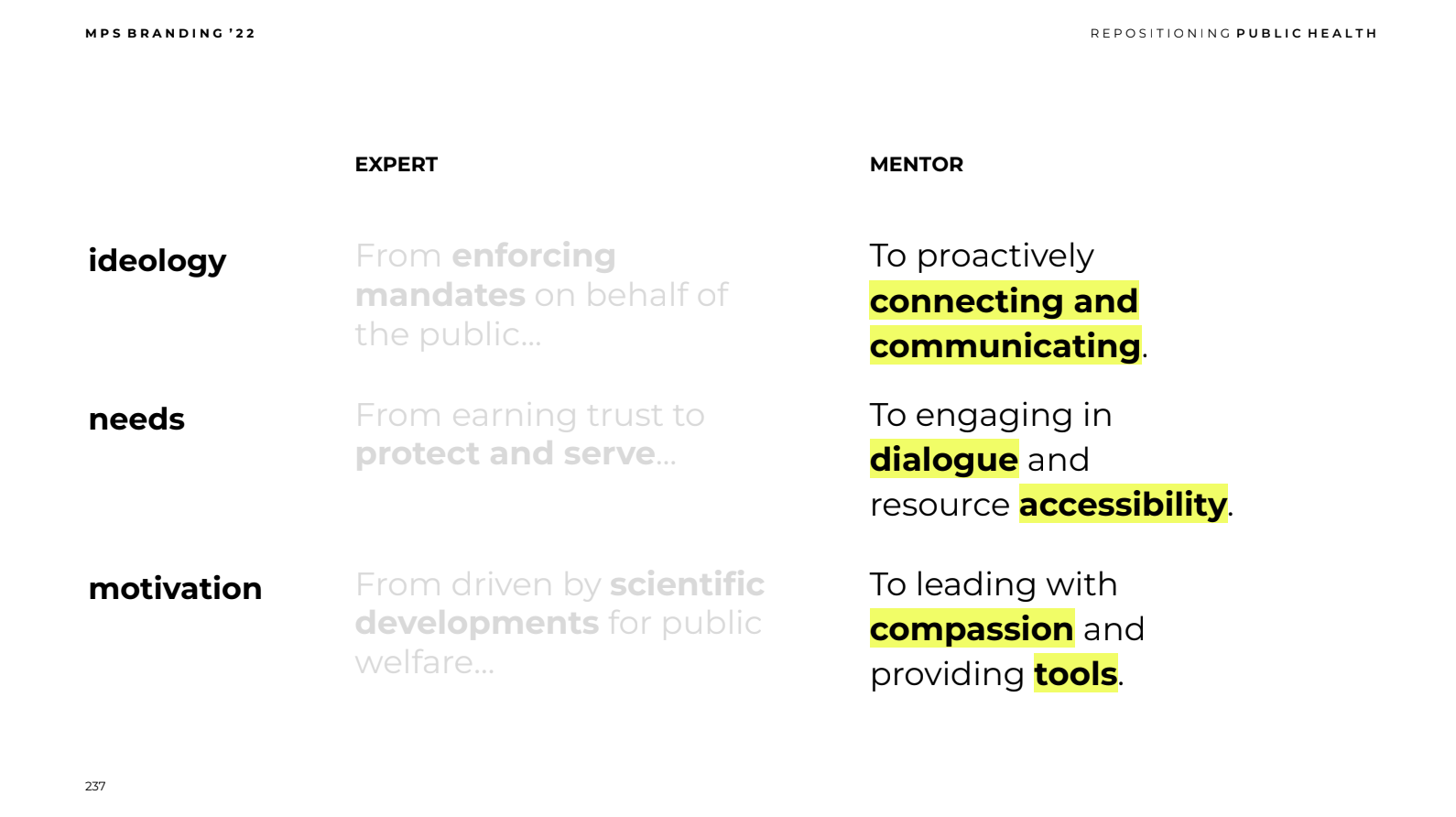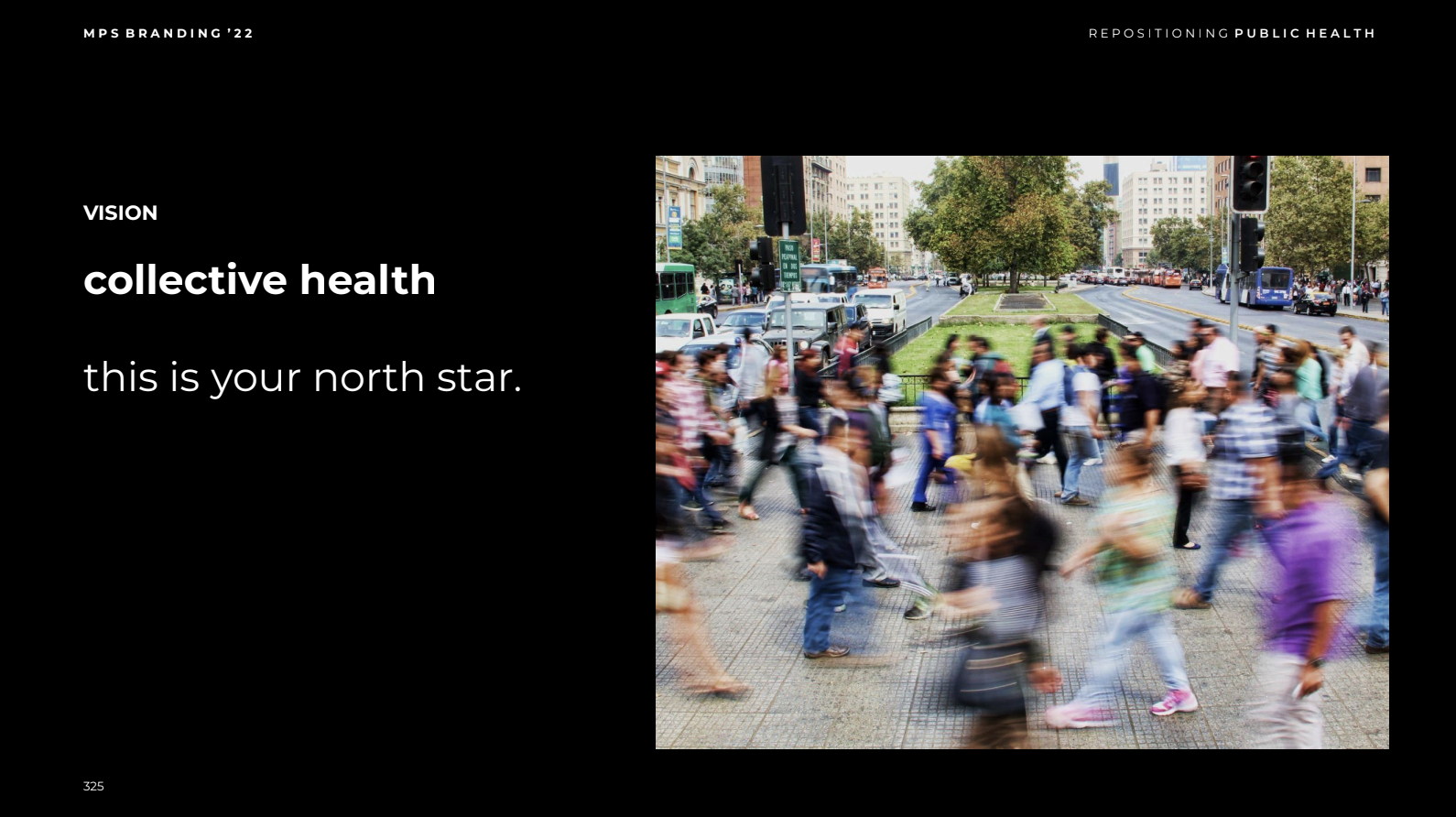“When public health is working, it’s invisible.”
— Jenna Mandel-Ricci, Chief of Staff, New York City Department of Health and Mental Hygiene
the challenge.
Repositioning Public Health
Define the shared ambition that unveils invisible powers and influencers to engage more people in public health to garner resonance and support, and to rebuild trust.
How might Public Health bring more attention to its successes by shifting the line of visibility to uncover overlooked aspects as well as unseen individuals?
audit.
First, we began by performing an audit within an assigned theme: Protection & Exposure.
We explored a number of situations in which these forces act in a symbiotic relationship, including nature, pain and pleasure reward systems, the microbiome, and confession for absolution.
In doing so, we drew three key insights based on our observations to guide future findings:
How can we ensure that people feel protected and cared for after invasive conversations & procedures?
How can we build a network that strengthens itself by assuming risks other systems are ill-equipped to handle?
How can we create a system that cultivates strength by increasing transparency?
audience.
Next, we proposed a recasting of an assigned audience within public health: The Expert.
From our preliminary research, we found that the expert is seen as an authoritative figure who implements health and safety decisions on behalf of the public, often communicating in a lofty and nebulous manner. We identified a necessary shift in how information is communicated between the expert and the public, transforming their role from an “expert” to a “mentor”.
methodology.
In order to execute this shift, we conducted 4 interviews with professionals in the public health field.
These conversations and our observations allowed us to glean three key insights:
Health is an empathetic process before it is an informative process.
Information is difficult to trust when it is ever-changing.
Socratic reasoning fosters trust and promotes discretion.
From our work, we were able to perform our recast of the expert as a mentor who is able to guide and share experience, reinforcing a relationship built on trust and respect. The public health mentor seeks to work flexibly within a rigid system by engaging in community dialogue, forefronting care with compassion, and providing the public with the tools necessary to make informed decisions.
the repositioning.
We began constructing the final repositioning of public health by going back in time to the origins of the public health system – the story of John Snow. Looking to find the source of a mysterious cholera outbreak, John Snow mapped deaths in the area, discovering that they clustered around the Broad Street Water Pump. This established a system of public health through the top-down protection of its citizens; times have changed since 1854, but the system has not.
current obstacles.
Lack of trust
Information saturation
Inaccessibility to resources
Public health requires a shift from a protector of the people to a collective body where protection is the role of the individual, and prevention is the responsibility of the system.
Public health must model itself after a communal well.
Wells by nature are self-generating, when dug deep enough, they hold the capacity to supply vital resources. The community maintains the well – without it the community cannot sustain itself.
To showcase this shift and lay a foundation for writing this new public health narrative, we constructed a brand ladder as a tool with which public health can successfully approach our suggested repositioning.














